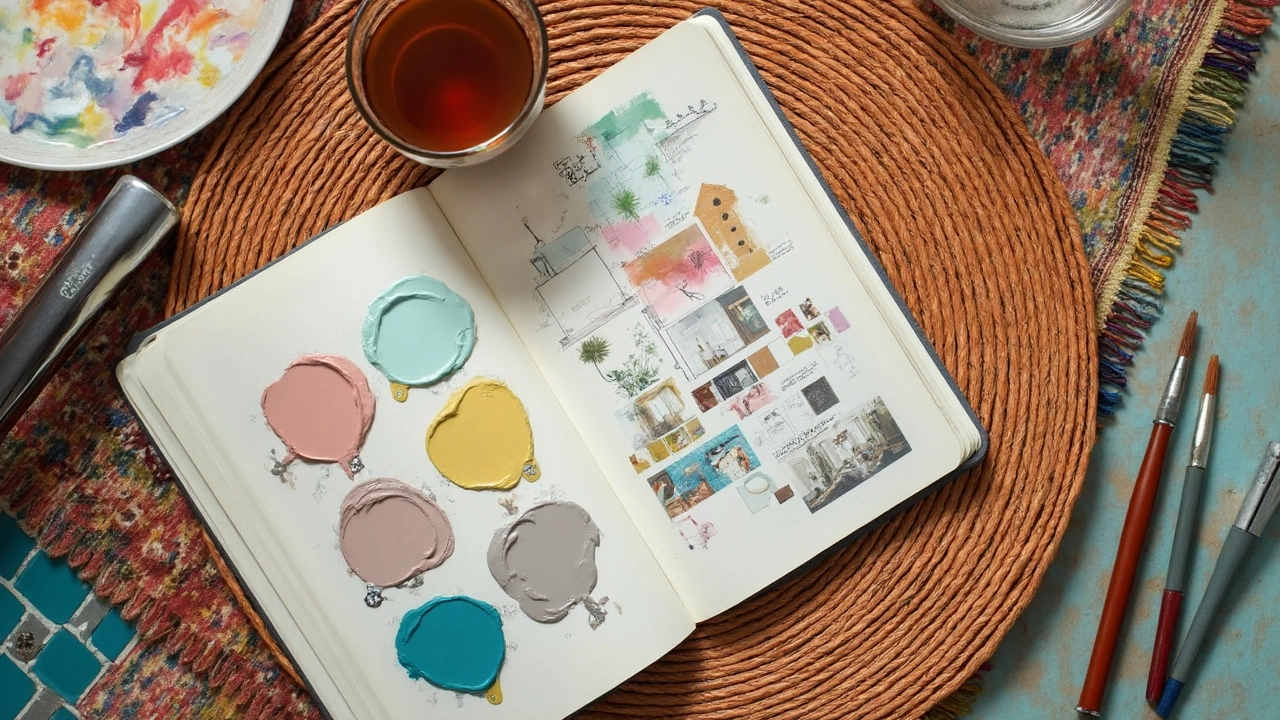If you’ve ever started your day scrubbing your hands in a cracked sink or staring at powder-blue tiles straight out of 1987, you know just how much an outdated bathroom can mess with your mood. Nobody should have to brush their teeth under a flickering fluorescent tube or step out of the shower onto peeling vinyl. The wild part? Transforming that time capsule into a fresh, modern space isn’t just about splashing paint and buying a bamboo soap tray. There’s a method behind every clever fix—one that saves you heartache, cash, and a mountain of dust. Let’s talk about turning your old washroom into your new favorite room.
Spotting the Telltale Signs of an Outdated Bathroom
You’d be surprised how fast a bathroom can show its age. Maybe you’ve got avocado green tiles with matching fixtures. Or perhaps there’s mystery grout that seems older than your house. Recognizing these culprits is the first step before swinging a hammer or setting a budget.
Start with the big stuff: does the layout make sense, or does it force you to sidestep the toilet to get to the shower? Next, think about color. Worldwide, neutral greys and soft whites have knocked out loud tile patterns and pastel bathtubs. In Wellington—and most of New Zealand—people lean into practical color palettes and natural light. Even the shape of your fixtures dates your space. Those shell-shaped basins? If they could talk, they’d quote lines from 90s sitcoms.
Outdated lighting isn’t just an eyesore, it sucks energy and money. According to Stats NZ, nearly 55% of homes in 2024 upgraded to LED bathroom lighting for both style and lower bills. Moisture damage is a hidden villain. Check caulking, floor corners, and under vanities for bubbles or stains—old bathrooms often leak energy and water. You might also spot inefficient plumbing. Dual-flush toilets became the norm in the late 2000s across Kiwi homes, so if you’re still living with a water-guzzler from way back, you’re sending money down the drain every time you flush.
Hardware is another dead giveaway. Rusted taps or faded light switches might seem minor, but they telegraph “neglected” at a glance. The same goes for wall mirrors with corroded edges and old ventilation fans that sound like jet engines. Technology has moved ahead, and many Wellington homes saw a wave of smart exhaust fans with built-in humidity sensors over the past two years.
So, if your bathroom packs any of these relics or layout issues, it’s ripe for modernization. But don’t make the mistake of chasing every trend or throwing money at flashy gadgets. Focus on the things that add comfort, efficiency, and timeless style—the stuff you’ll appreciate every morning and night.
Game-changing Upgrades: From Small Tweaks to Big Changes
Alright, so your bathroom screams “blast from the past.” Where do you even start? The best thing is, you don’t need to rip everything out overnight. Small, targeted changes can make a massive difference—sometimes in just a day or two. Here’s what actually works, based on what’s trending in renovation circles around New Zealand, plus some universal truths from remodelers worldwide.
modernize bathroom essentials begin small. Switching out old handles, drawer pulls, and towel racks is the classic “weekend project” for a reason; for under $100, you can swap out shiny brass for matte black or brushed nickel, both topping 2025’s style charts. If your showerhead puts out water like a sad garden hose, swap it for a water-saving rain-style head. You’ll get a spa-like vibe with less water—that’s handy, since Wellington faced temporary drought measures this past summer. Modern showerheads use up to 40% less water and still feel lush.
Mirror swaps pack a punch, too. Frameless or back-lit mirrors instantly update the vibe. Peel-and-stick wallpaper is trending now, and it’s especially hot for renters or people on a tight budget—it goes on easy and can peel off without messing up the wall.
Let’s talk color. Even the pros admit, fresh paint works magic. The biggest paint suppliers in New Zealand say that bathroom makeovers featuring soft greys, earthy taupes, and deep navy surged by 30% in late 2024, especially in small spaces. Paint covers old tile backsplashes, laminate cabinetry, even tubs and tiles if you use the right product. But never shortcut with prep—scrub, prime, and seal or you’re just hiding issues, not fixing them.
Don’t forget to check lighting. Swapping a dated fixture for a new LED pendant, dimmable sconces, or a backlit mirror lifts the energy fast. If you don’t have a window, a modern LED tube lamp mimics daylight—no more yellow dungeon vibes.
Now, got a bit more time and budget? Consider a low-threshold shower (safer, easier for all ages), designer vinyl or waterproof laminate flooring, and tidy, wall-mounted vanities. The average bathroom reno in New Zealand costs between NZD 5,000—12,000 for a mid-range upgrade, but doing things like floor overlays and painting tiles drops that sharply. For moisture-prone Wellington, focus on waterproof, mold-resistant building materials. For example, new anti-mold shower liners and AquaStop subfloor panels became popular last year—they cost more up front but save on repairs later.
Tech isn’t just for the living room anymore. A small heated towel rail doesn’t only scream “luxury”—it also keeps towels dry and mildew-free, a godsend in New Zealand’s damp seasons. Smart exhaust fans (which kick in automatically when steamy air rises) are now standard in most new builds. Even basic upgrades—a soft-close toilet seat, a motion-sensing tap—promise that new-bathroom feel without gutting your space.

Tearing Down Without Ripping Out: Budget-Friendly Moves That Deliver
Everyone loves a killer before-and-after, but most of us can’t—or don’t want to—tear our house apart. The trick is to get the most impact with the least demolition. Let’s talk about the art of ‘cosmetic remodeling’—modernizing every inch you can see and touch without rebuilding from scratch.
Resurfacing takes the top spot. Tired vanities get a facelift with high-adhesion paints or concrete-look overlays. There are NZ-made kits specifically for covering old laminate, and they hold up impressively well against steam and splash (yes, even with kids). Resurfacing tiles with special epoxy paint gives them a fresh look and seals out grime. When you spray tiles instead of replacing them, you gut renovation time and cost by more than half.
Grout dye pens cover ancient, stained grout in a single pass—for under $20 you can get your white tiles looking fresh again. Peel-and-stick vinyl tiles are making the rounds in DIY circles—these can revamp entire floors for the price of a nice dinner out. They’re durable, waterproof, and most newer versions easily pop up if you need to replace a single square.
Open shelving is a move borrowed from European design and now a mainstay in Wellington renos. Remove doors from wall cabinets and sand them smooth for a modern, display-style effect. Display rolled towels, a basket of soaps, or a plant—you’ll look like you hired an interior designer.
Want some stats? Check out this overview of popular bathroom upgrades & their impact on resale value in New Zealand (2024 data):
| Upgrade | Average Cost (NZD) | Value Increase (%) |
|---|---|---|
| New paint & fixtures | $500 - $1,200 | 10-12% |
| Flooring replacement | $950 - $2,200 | 8-11% |
| Tiled shower upgrade | $3,000 - $6,000 | 15-18% |
| Smart ventilation | $500 - $1,000 | 5-6% |
| LED lighting retrofit | $120 - $350 | 4-5% |
If you only have the courage (or cash) to update one thing, make the floor and paint a priority. Ditch tired sheet vinyl for new waterproof planks or tiles. If you’re renting, snap-together floor panels can go over existing surfaces and be taken with you later—completely landlord-friendly.
Finally, don’t underestimate the power of storage. Modern bathrooms look tidy because there’s a place for everything. Use vertical space for shelves. Slim slide-out organisers under the basin fit so much more than those saggy old fabric baskets. Upgrade hooks, rails, and add a medicine cabinet with outlets for charging razors or toothbrushes. These changes are invisible in listing photos, but they totally shift day-to-day life.
Choosing Fixtures, Fittings, and Trends That Will Actually Last
Let’s cut to the chase—bad trends and cheap low-quality gear age a bathroom faster than you can say “shag carpet.” It’s smart to avoid anything that’ll look 2025-specific next year. So, what signals ‘modern’ instead of ‘passing fad’?
Stick to fixtures and materials that respect the bones of your house. If you’re living in a pre-war villa in Wellington’s Brooklyn suburb, those high-gloss chrome taps might stand out for the wrong reasons. Go for brushed nickel or even modern ‘living’ brass—these take on a patina and feel at home with both old and new surrounds.
That goes for tiles too. Subway tiles have been popular since the early 20th century, but this year’s twist is using oversize or stacked tiles for big visual impact. Large-format tiles cut down on grout lines (easier cleaning!) and reflect more natural light—a critical win if your bathroom is windowless or faces south.
On-trend now: floating vanities, oval mirrors, walk-in showers with Crittall-style black trim, and splashbacks in moss green, teal, or even terrazzo. Unsure about color? Most NZ home stagers recommend keeping main fixtures neutral and adding punch with small, “removable” doses of color—think towels, vases, or wall art. With things like sage green bathroom mats showing up in nearly every Wellington hardware store, you’re not short on choices.
Concerned about eco-friendliness? You’re not alone. Low-flow toilets and taps, recycled glass tiles, reclaimed timber shelves—these aren’t just trends, they’re winning points for anyone eyeing resale or rental value. Nearly 65% of new bathroom installs in NZ in 2024 featured at least one eco-friendly product (according to BuildNZ stats). Plus, water-saving matters even in our rainy capital city; every litre counts for Wellington’s aging pipes.
When you’re ready to buy, don’t be afraid to check online reviews or ask to see products in person. Flimsy drawers, wobbly taps, or non-UV-resistant plastics will haunt you faster than a cold Wellington southerly. Pay most for stuff you touch daily: taps, shower mixers, you name it. If those feel solid and smooth, you’re on the right track. For items you rarely handle (like a shelf behind the toilet), you can skimp a bit.
Want a breakdown of current trends versus soon-to-be regretful fads?
| Trend | Likely to Last? |
|---|---|
| Subway and large-format tiles | Yes |
| Patterned vinyl floors | Maybe |
| All-black fixtures | Short-term pop, can date fast |
| Natural textures (timber, stone) | Yes |
| Statement sinks (colored, vessel) | Maybe |
| Minimal, open shelving | Yes |
| Duck-egg blue tubs | No |
Steer clear of wildly colored toilets or crazy tile mosaics unless you plan to stay forever and love the look. If selling or renting out soon, go for clean, neutral, and flexible. And if you do add bold color—make sure it’s something even your gran wouldn’t scowl at.
If you want your bathroom to stay both fresh and functional, just remember—it’s the little details and smart materials that age well, not the flashiest new product. You’ll thank yourself every morning when you aren’t tearing your hair out over a leaking mixer, a squeaky cabinet, or a light that flickers like a horror movie set. So go ahead, kick that outdated look to the curb, and step into a space that feels modern, welcoming, and built for real living in 2025.

